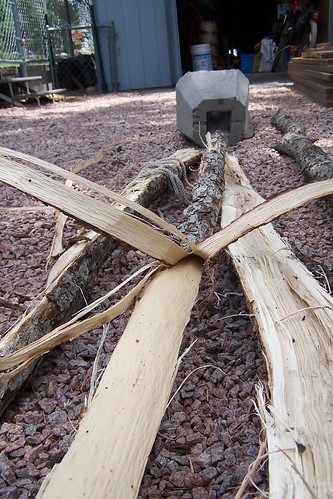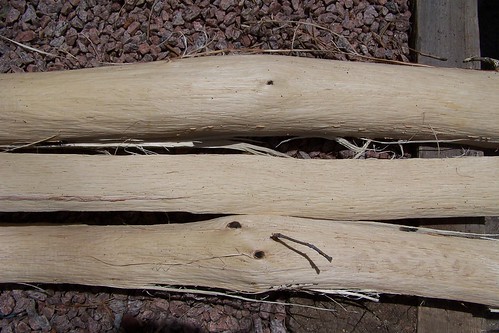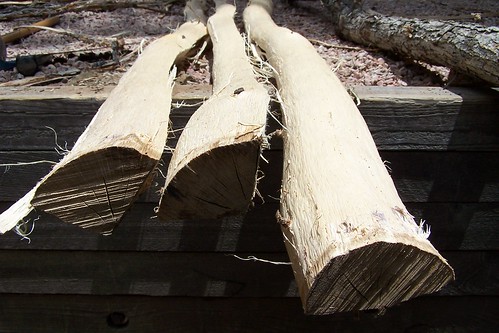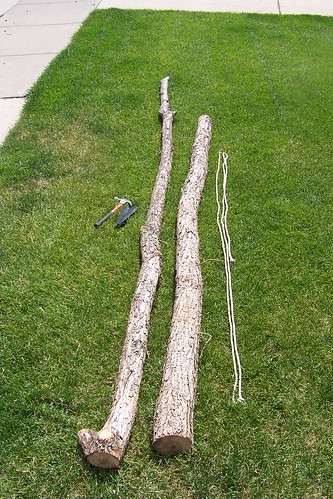

On the left (if the formatting works, and your screen is wide enough) an end-view of the larger of the two logs. You can see where it has started to crack slightly in the seasoning. Trust me that this didn't make it at all easy to split. I can see why this oak might be appropriate for bows; its _tough_ and it really didn't want to fall apart.
On the right, I have finally got the bastard started, after which it went better, but its still holding on something fierce.
Eventually I got the thing split in 3:


The wider bit on the right _may_ be big enough to split again, but I'm going to see how much I lose in the shaping - we're looking at the wide ends here, and it narrows a bit up the other end. The peeling by contrast was easy; as you can see, once you picked the end of the bark up with a chisel it came off in big clean strips, leaving a smooth outer growth ring exposed. From the sound of it, I should be using this as the back of the bow as intact as possible.


The peeled staves - especially the bottom one - revealed some small knots that may be troublesome. Also, while the angle of the last shot exaggerates it a bit, they're not what you'd call perfectly straight and there was some twist in the split.




